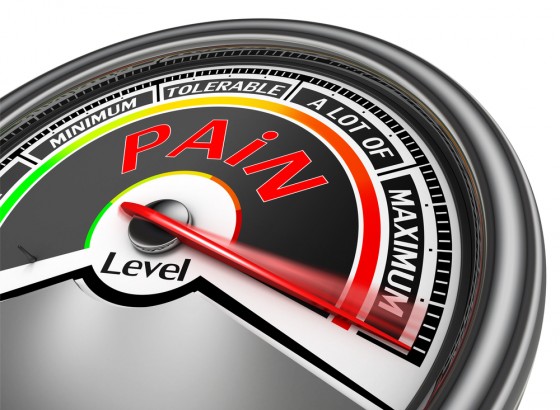Photo ©Donscarpo
Employers nationwide are always concerned about absenteeism. When a worker doesn’t show up, the loss of productivity and profits can be staggering, making the worker’s problems a serious issue for the employer.
If the employee doesn’t stay home, the result doesn’t fall under ‘absenteeism’ but it still creates a negative impact.
Productivity loss due to poorly performing employees who try to “work through” recurrent pain places employers in a difficult situation. Lost productivity—like time itself—is a non-renewable resource. No one wins when employees are unable to work.
The reverberations are felt on many levels. The worker may continue to feel pain. The employer must deal with the issue. Colleagues and associates often need to pick up the slack. Customers may be affected.
Who else? The employee benefits managers and the company’s workers compensation claims statistics. The higher the number and value of claims, the greater the drag on the company’s fiscal performance.
Pain emanating from chronic or lingering injuries needs professional involvement. The good news is that by treating the pain comprehensively or applying interventional pain techniques, nagging injuries or pain can be remedied or reduced sufficiently to increase the productivity of suffering employees.
On the Job
For many sufferers, relief through medication, physical therapy or other ‘traditional’ remedies is temporary, but pain and lost productivity continue.
Interventional pain care and management is a specialty where the physician diagnoses and treats pain at the source. According to the American Society of Interventional Pain Physicians (ASIPP), “Interventional pain management is defined as the discipline of medicine devoted to the diagnosis and treatment of pain-related disorders, principally with the application of interventional techniques in managing subacute, chronic, persistent, and intractable pain, independently or in conjunction with other modalities of treatment.” Employers should encourage workers to learn more on how interventional pain management can reduce the duration and severity of pain, help them return to work faster and enjoy an overall improved quality of life.
Interventional pain physicians employ a number of techniques and procedures. Among the many successful solutions are epidural steroid, trigger point and botox injections; sympathetic plexus blocks; spinal cord stimulation; radiofrequency ablation, percutaneous intradiscal procedures, and implantable intrathecal drug delivery systems.
Pain reduction or eradication is the desired outcome, but diagnosis plots the path to potential recovery. Procedures like fluoroscopically-guided injections using local anesthetic can provide both relief and diagnostic value. Fluoroscopy is an imaging technique that incorporates X-rays to produce real time images of the internal anatomy. This diagnostic tool provides more accurate delivery of medication and important information to the physician on the origination of the pain, and thus the doctor can offer more effective treatment. In a healthcare climate that seeks to reduce unnecessary expenditures, like tests or procedures, such interventional techniques can reduce or eliminate ineffective, unnecessary or even more invasive options, up to and including surgery.
Injuries, chronic pain and absenteeism, plus the urgency to get employees back to work affect more than the bottom line. From on-the-job injuries, like lifting, strains and slip-and-fall injuries, to the resulting drain on human capital and performance, organizations are in need of solutions.
The Call of the Benefits Manager
The appropriate first call made by a human resources director or employee benefits manager is to the general practitioner or claims adjuster to document the mishap. Yet, if pain persists and lengthens an employee’s out-of-work status, quite possibly exacerbating a deteriorating psychological status, resolution may be difficult to achieve.
The advice and services of an interventional pain management specialist are beneficial and can often be even more effective when combined with physical therapy or other home programs. A patient treated early often begins to experience expedient and lasting relief. The employee is not only more comfortable, but also returns to work sooner. This increases organizational productivity and, equally as important, reduces the time of a workers compensation claim.
Interventional pain care and management is growing in favor and its beneficiaries run the demographic gamut. Depending on the injury or source of lingering pain, employees from millennials to baby boomers approaching retirement are ideal candidates for many procedures.
This is especially important as many workers are putting off retirement into their late 60s and 70s. As those older patients more frequently suffer degenerative problems that may create or complicate injuries, interventional treatments deliver an ideal remedy, especially when performed in concert with physical or occupational therapy.
Using an Interventional Pain Specialist
The engagement of an interventional pain specialist presents a unique scenario. Benefit managers, human resource professionals and case workers have become more aware of interventional pain care over time.
Who should get the referral? The American Board of Anesthesiology has a certification process for interventionalists, as well as an additional sub-specialty certification in pain management. The American Board of Pain Medicine (ABPM) also certifies qualifying members. A Fellow of Interventional Pain Practice (FIPP) has earned certification by the World Institute of Pain, and the American Board of Interventional Pain Physicians (ABIPP) has a certification process as well.
The American economy loses upward of billion annually, due to lost productivity stemming from health issues and missed work, according to a 2013 report from Gallup-Healthways.
Issues include chronic health problems such as pain, obesity, high cholesterol, blood pressure, cancer, asthma and depression. Even issues like poorly designed ergonomics in the workplace can result in significant pain and absenteeism. About one in three (34%) of all work missed stems from ergonomic-related issues, according to the U.S. Bureau of Labor Statistics.
For employee benefits managers who know how to help employees tackle pain and return to work, absenteeism and lost productivity can be reduced and billions of dollars can be saved all year long.

